Project details: The further you go, you may fall or you may learn
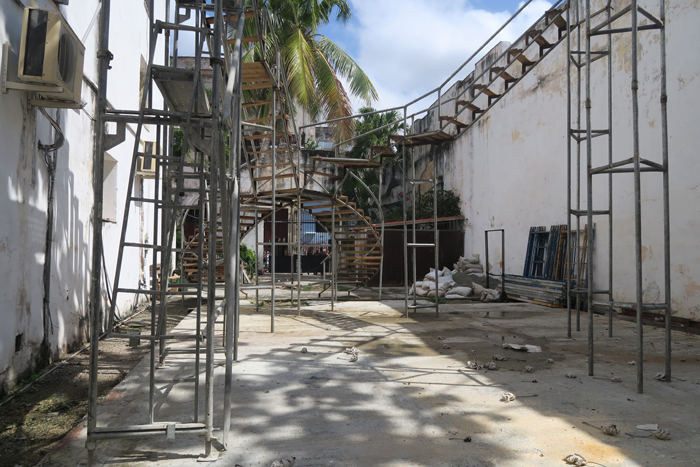
One cultural clash after another
1. Background
I : Atsuko Mochida (female, born and raised in Tokyo, Japan, works in Japan and Germany mainly, 28 years old at that moment, speaks Japanese and English, but no Spanish, 156cm high, 45kg weight) was invited to the art exhibition in Havana, Cuba.
It was part of an anniversary event commemorating 120 years of Japanese migrants in Cuba, organized by The Japan foundation, which is one of the biggest cultural foundations in Japan and made by the Ministry of Foreign Affairs. The purpose of the exhibition was to raise interest in Japan, and expand the cultural communication between these two countries. 7 Japanese artists and 4 Cuban artists were invited to the show in the national museum, Centro de Arte Contemporaneo Wifredo Lam, including 4 Venice biennale artists. It was the biggest show of my career.

I was offered to make an artwork in the patio of the museum. There was freedom to decide what to do. But as an artist, I was expected to make some physical intervention to the space. In two weeks, I made an initial intervention plan for the patio; a double staircase to nowhere. The stair was stable and elegant at the bottom part, to attract people to climb up, but when it got higher, it become less stable with the gaps between the steps getting wider and wider, almost like a ladder. Viewers should go up at their own risk, to go higher or stay safe below. The doubled path allowed people to make a decision, to go up or go down, meet somebody or not, go more or turn back. The stairs were designed to be 12 metres high at the top, which was higher than the building of the museum, to the sky. It was to provide a new perspective of the world, with a big risk.
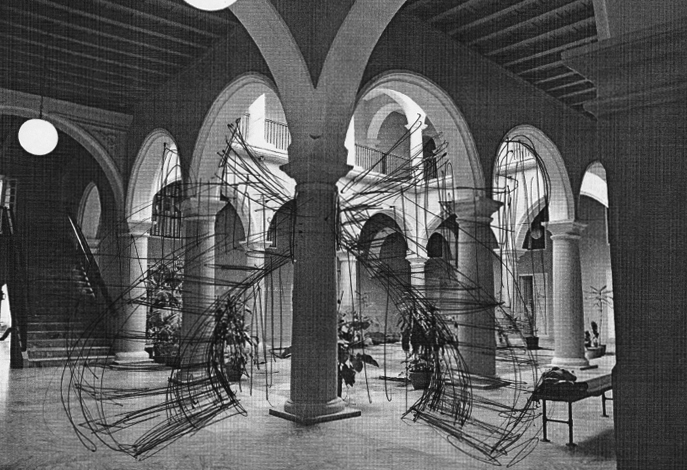
In my general way of working with this kind of site-specific project, I wanted to work with local people and local material. I would have loved to take this way, even though it sounded like a really hard task. To be honest, it was difficult to even imagine for me. Making a big scale artwork with Cuban material and resources was a big challenge for many of the artists, who is an outsider of the community and cannot even speak the local language. There are some huge contemporary art shows in Cuba, including the Havana biennale, but almost all large scale installations are made in other countries and then imported to Cuba. As a way of dealing with this reality, the local director recommended me to bring every material and tool to realise the artwork from Japan. Despite this, I decided to try this quest, to create an artwork, made 100% in Cuba.
2. Record of the project
The Research Trip:
As research, I had an opportunity to go to Cuba for 3 weeks in November 2017. Beforehand, I read some books about the history of Cuba, watched movies, but it was so difficult to imagine the real situation of the country. Colonization, Revolution, Socialism… all topics that were not familiar to me as physical experience. When I got there, I mainly researched about the building and the venue, and made an idea for the work.
For this exhibition, there was a local art institution to collaborate with. They introduced me to one local construction worker, who is referred to as “O” in this article. The institution worked with him before, for another artwork, and they told me that O can be available and was trustworthy. I didn’t find any other options during the 3 weeks trip as an outsider of the society. I met him and talked about my project. O said the plan would be possible. We made a budget plan and he gave me the maximum cost which included everything, even for dismantling. He demanded me to give all the material to him after the dismantle because he said it was even more precious than the money he would get. At the very end of this research trip, I gave O the measurements that I needed, including the height of the structure of around 12 metres. I then explained carefully in the actual museum with me, O, a local engineer who would work with O, the art director from the local institution and 2 local curators who were also mainly working on this exhibition.

O and the local art director told me it would be difficult to get the material and this could be the most difficult part of the project. They told me that December would be a good time to the collect material, because many people sell their belongings to get money for Christmas. We agreed to send the money, around half of the whole budget, to get this material.
Clash 1: INTERNET BASED WORK DOES NOT WORK
After I got back to Tokyo, we all tried to proceed with the project via email. The Japan Foundation demanded O to send details of the material cost and send money to him via the curator of the museum and the art director. The local team tried their best to catch O to ask that, but he never gave the detailed information to them. The Japan Foundation and I realized that this was not working and the only way was to bring cash in hand and negotiate with him face to face.
Nowadays, working with the internet and proceeding with a project remotely is normal. But in Cuba, it was not working so well. Because of the weak and tricky wifi connection, sending an email with big data was really difficult and it was almost impossible to talk via an internet call. Even the national museum’s office sometimes had internet cuts. Local workers did not work so much from orders by internet. It may look as if they are lazy or living in the old ages, but that was their way of risk management (maybe). In Cuba, unexpected things always happened. They can trust something they can see and grasp. With everything else, if they start too early, or prepare too much, it may make the work less productive.
When I was in Cuba again, I visited the museum firstly, and the curator said to me the second day after that we all had to visit the committee of historical heritage to get permission to make the artwork in the building. This was completely out of the blue.
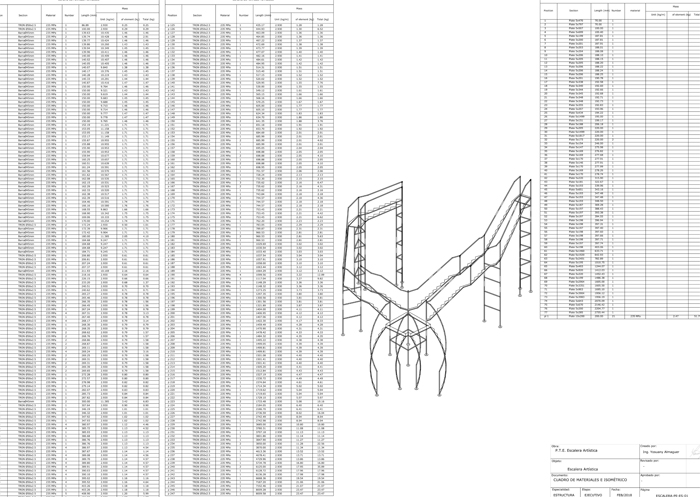
I finally got the construction plan but the figures had been changed a lot without any notification. There were also no measurements on the plan. I arranged a meeting with O and the art director one day before the visit of the committee. We didn’t have time to change the plan before the committee arrived so we agreed to try to pass the committee with the wrong plan and change it afterwards. It turned out that actually the committee didn’t check so carefully after they gave the permission.
The committee meeting was a great success, they allowed us to start building even on the same day. But by midnight, I started to read the wrong plan carefully and realized that the difference of the height was really serious.
Clash 2: MENTALITY
(Not working with the plan, but working with the reality)
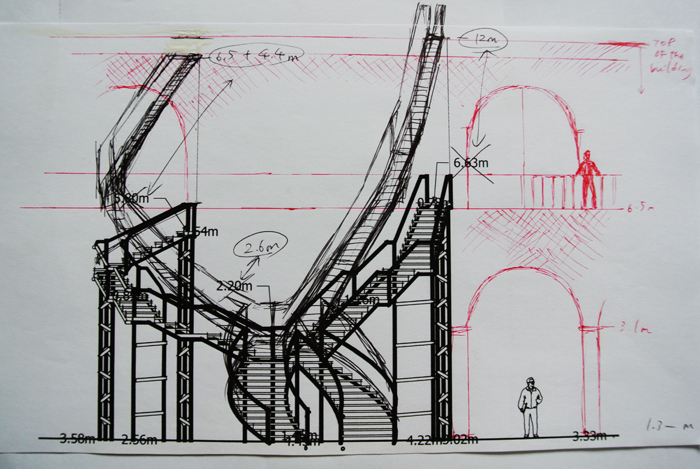
We agreed to make the structure 12 metres tall in the right wing. Although it shrank to 6 metres. The budget plan was based on the plan of 12 metres, and this was a serious problem for the artwork. Because the work should provide a higher position than the “safe place” as the second floor of the building which was also 6 metres. As a concept of the artwork, 6m high was not working at all. The point is, he did not tell me that he had changed.
The next day, me and O had a meeting to pay half of the budget to finally buy materials. But before that, I had to talk with him again, really seriously, to make him understand that measure was part of the artwork, and it was not just a random non-functioning staircase. I also tried to understand the reality of the country and be flexible as much as possible. We had a talk with translation via phone call and agreed to make the work 8 metres high, which was still 4 metres less than the plan we agreed a few months ago, but 2 metres higher than the wrong plan.
Through this argument, I found that he did not take my plan
seriously.Clash 3: THE SOCIAL SYSTEM
(The market of the material)
Besides their mentality, another massive difficulty when working in Cuba is the social system. The Cuban market is oriented by the government. Residents can get basic daily supplies at a cheap price, but not everything. If one needs something special, one can go to the black market, or just use what they have and invent a new way to create similar functions through what one has. With this reason, many Cuban people are creative. As the local director said, there is a pencil, but not a 3B or 2H, just a regular pencil. There is normal A4 size paper for printing, but not A3. If you need something in particular, it would be hard to get it quickly. Maybe someday you can get it, but nobody knows when.
The materials came from the black market and workers hid them in their attics, backyard or even in the neighbors garden. This process was also taking a really long time. When I visited their working place, it means their house, to check the materials and initiate to start the work, the worker welcomed me, half naked, relaxing in his chair. It was really shocking for me. I asked “What are you doing here? we don’t have time, why are you not working and sitting here resting?” And his answer was “I’m waiting for the material.” The smuggling takes time. There is no shop to buy all the materials at once.
The problem of the market was always besetting, until the very end of the constrution.
Clash 4: THE SOCIAL SYSTEM
(The market of labor work)

In this project, the construction work for local workers was private. Doing mini jobs was a pretty normal thing for them as a survival strategy. But I couldn’t find insurance to support workers. The place they called “workshop” were the back gardens of local houses with chickens, pigs, rabbits, a laundry drier and small electric motor. It was almost guerilla style and I didn’t know exactly who was working for my project or not. Many local people come to interrupt the work. Sometimes an old lady, who appeared to have Alzheimer’s disease, came to the workplace and sat next to me. She watched the work that was taking place and sometimes shared snacks with the workers. Other local guys came holding small materials for the workers to cut. I thought he was bringing something for the project, but it was actually for himself, a totally unrelated thing. Sometimes a lady came to dry her underwear, and offered suggestions to the workers.

The way of working in Cuba was less competitive. I should have visited their workshop just to put pressure and watch them work. Just to say “What are you doing?” “When will you finish this completely?” “ Why aren’t you working? What are you waiting for? There are a lot of other things to do!” They were often waiting around for a really long time. To proceed with the project, I should have physically been there to show that I am waiting for them to finish their work. The workers that I met in Cuba, especially the local people who could not speak English, appeared lazy at first. They didn’t seem to care so much about the deadlines that were agreed. They might have thought that they could finish any great amount of work in one day. At least, that was their intention in the morning. Then they would just carry on with the work that they could do, and if the work wasn’t completed by night time because of some reason like “the other worker didn’t show up” or “an unexpected blackout”, they would just say “Mañana! (Tomorrow!)” .
They would take a rest whenever they felt tired. They took lunch breaks together, but no coffee breaks. They wouldn’t decide a time for the break and would just stop working when they wanted, individually from time to time. To smoke, to chat, to discuss how to solve the problem, to catch a phone call, to check the taste of their wife’s cooking, to help neighbors, to wait for a colleague to come back and hold the piece of wood that needs cutting, to wait for another worker to bring materials, to wait for the machine to get fixed, to wait for another colleague to cut the banana tree in the garden in order to make a bigger workspace …
They didn’t try hard enough to make the work effective. In Japan, construction workers have a strong hierarchy. The head of the site (現場), has a lot of power and controls all the other workers. He decides what to bring to the site and how to use them. Freshmen start from the bottom of the hierarchy, with the lowest income, and generally do the most hard work. To move up, they have to remember the work and think how to make their work effective. Through this effort, they all try to minimize the working time and maximize the outcome. It brings a bigger benefit to the company. There is always a strict deadline and a required workload. However, in Cuba, nobody judges anything. In my project, there was O as a main person, who contacted with the artist. He is the one who gets money and organizes the work. But he didn’t command anything. They always discuss and discuss, to decide every single measurement. For example, there was one guy who had a small disability in his team, which was mainly made by his neighbors. He could do simple, manual jobs with his tall and strong body. He couldn’t do anything too complicated and yet he was also in the discussion process like the rest of the workers.
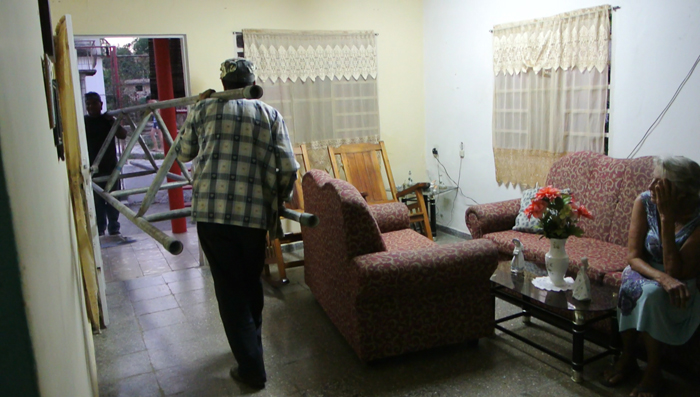
As mentioned before, the workplace was behind some houses, and there is only a narrow way to get out. I asked them how to move the materials out to the museum, and they answered “No problem, we will cut again and then connect them at the museum again!” Actually they did do this before moving the material, and went through the house just next to the old couple eating their dinner. It fitted perfectly through the narrow corridor of the house. Yes, they might have planned that part really well. The preparation may have not worked so much, because even for the locals, there are too many unexpected things. Their strategy is “never give up, and think how to make it possible.”
Clash 5: KICKED OUT FROM THE MUSEUM
(The insurance issue and responsibility)
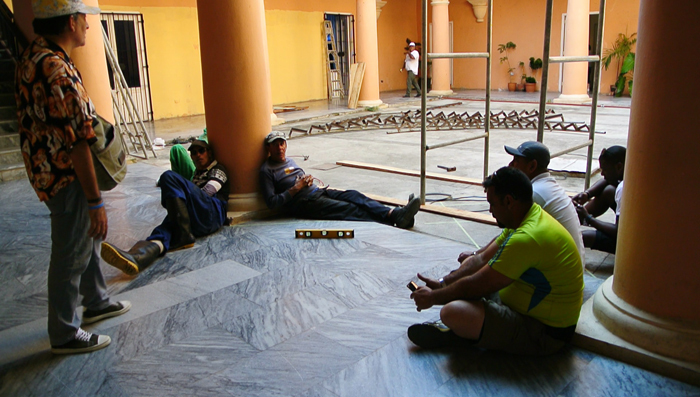
After the many troubles that we had, we finally managed to move all the materials to the museum. This was with a huge delay, 2 days before the opening. I was incredibly stressed and tried to move the pieces as soon as possible, but the museum stopped us. I and 7 other workers with a bunch of materials were just stuck in the vacant patio. At first, I heard that the certification paper had not arrived yet, because the department of the bureau was busy for another event and could not make a copy, although we had permission to build the artwork in the patio. The museum told us to wait a few hours until the paper arrived. After a while, I was called to the office room and realized the problem was actually about a lack of insurance and responsibility. Nobody could take the risk for the historical building. The only solution was to go out from the building and create the work in the backyard – the place for parking cars and garbage bins.
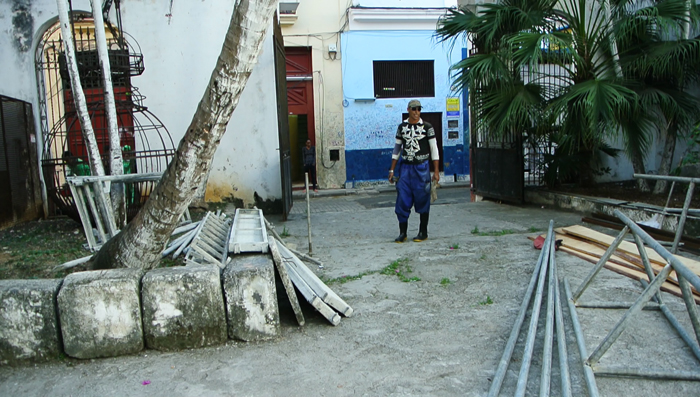
Because of this change of location, I should make the construction plan again, using the prepared materials. The serious problem was, workers didn’t have so many construction tools. Especially the scaffolding, which was thin and of low structure. In the plan, we could use the patio and there were some floors that we could work on, but the actual site did not have any floors. Only high walls that surrounded the sides. Anyway, the workers started with this poor structure. Two young kids went up the unstable structure and tried to make the higher part. The scaffolding shook strongly and I could see danger that they could fall easily with fatal consequences. I screamed a lot, but the workers shut me up, so they could concentrate. They also didn’t have any insurance of course. When the structure got to 6 metres, the workers and I agreed to stop making it higher because of this risk.
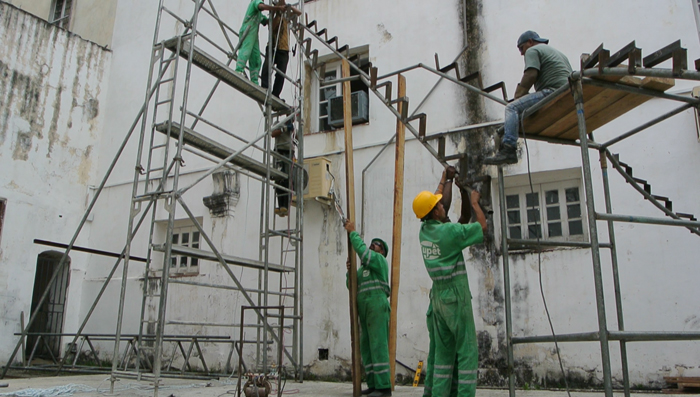
One day before the opening, the architect who made the construction plan and calculations visited the construction venue and told me the shocking fact about the stability of the artwork. He designed the bottom structure to withstand everybody, even a really big person who could jump on it. The upper part could only be used for the performance which the artist would provide. However the builder bought weaker material than the original design in the black market, because there was no proper material. The architect didn’t realize that fact because the workers never told him and neither had I. The architect said to me that based on this fact, no one could climb up. If I did and something was to happen, he could not take responsibility. Additionally, the workers had already changed every aspect of the design to realize the work. They added some parts or cut some steps and added the cut part to another part… The plan had already failed, and that was the only way to make the work happen. I decided not to climb up higher.
The speed of their work was really slow, even when there was not much time left. Still the workers would wait around, smoke, sit down, lay down. I asked many times if it was possible to finish all the structure before the opening and the workers always said “Yes of course.” We had agreed from first meeting, that if they couldn’t finish the construction before the opening, I will not pay any of the money. Actually, it was just trick of negotiation. I had cash with me and readied to pay. However, I wanted to use money as a bargaining chip, to make them work seriously. Just a few hours before the opening, I told them again in earnest, “if you cannot finish the work, I have to think of some way to show the process as an artwork. If you think it’s impossible to finish, tell me honestly, otherwise I cannot pay as we agreed.” At that moment the workers realized what I was doing was not their ordinary way of working and they had a different deadline idea. Finally he said that it was impossible. (As like “Yes, it is possible, but not today.”) So I stopped them and made the situation as an installation.
During the show, the workers still worked on the construction and the structure changed from time to time. After finishing the construction, a chain was put on the stairs so not to be touched by the viewer. The stairs were designed to go nowhere, just to get high, but nobody could even step on them because of the permission. The boundary was doubled and tripled causing the stairs to just float in between all of the permissions.
I like problems, I like boundaries, especially with some reasoning from others. With those bitter facts, we can understand the shape of the world. All these difficulties gave me some fragments to understand what the country is and how the people are. My work was imperfect and unfinished, but it included many reality inside. I had a conviction that the art piece was great, with all these problems.
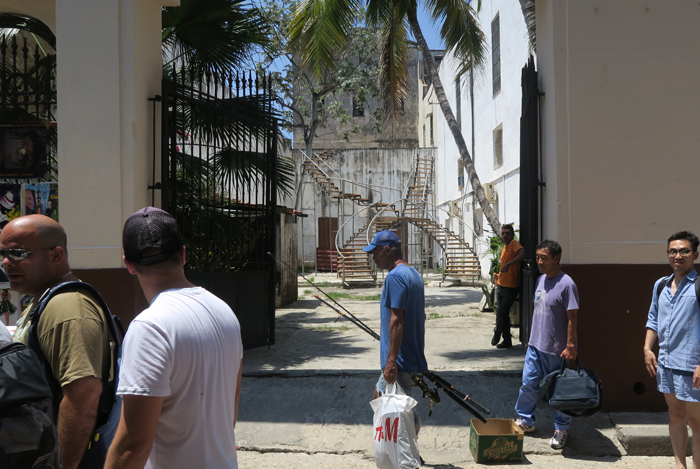
3. The peripeteia with the third eye
One artist’s good work can be another’s failure. Eric Fischl, talking about failure, points out that the most interesting idea in one of his paintings was actually not his idea. And curiously, an artist’s original idea may not have a place in his or her own work.
Joel Fisher “Judgement and Purpose” (1987) –The Forms of Failure
After the show in Cuba, the constructed work which was made in Cuba was dismantled as material and taken by the workers. From my perspective, I failed every time and everything in the project. My plan would have been easier to realize in Japan or Germany, where I work mostly, with enough budget. So, I regard this difficulty as a trial, and see myself somehow as victim of this cultural clash. The Cuban curators and most locals who I talked with could easily understood and sympathized with my trouble.
For the result exhibition in Tokyo, I felt a strong necessity to show this process. The conflict was a most interesting component of the work. The physical work was also great, not because of the design, but because it was a crystallization of our conflict and it was possible to see that in every detail. I had taken video footage from my camera. I tried to edit this to make a video work to show the process. At that moment, I was in Germany as a MFA student. I asked a Spanish speaking friend to edit the video together. He agreed that and we worked for a couple of days. But after ordering the sequence, he cancelled this work. For him, my attitude and maybe the project itself was not right, and he felt that it was not possible to keep working on this issue. As he said, the video was not right.
Looking back at my video footage again with his response, I understood the fundamental problems with the documentation. The first point was about money and power. To talk with the workers, to make them sit at the table for discussion, I tried to talk about money as an effective negotiation tool. Because they did not care about the exhibition opening or the art itself, but they cared about the money and material which they could get after the work. It was possible to be seen this as neocolonialism, that I was supported by a Japanese fund and appropriating this in a bad way. The show can also be seen as the promotion of Japanese culture, communicating with internationally successful artists in Cuba, who are also promoting capitalist globalization. This problem was not so visible when I was inside the situation physically. With a third eye, this structure and weird relation emerged. It created an entire discussion, success or failure, to another level. This judgment that had completely changed my perception was another cultural clash. It was not just an objective opinion, but as a western liberal way of thinking, which is leading the art world – Endless desire and fight for rightness.
Another point was that I was hiding behind the camera (even though I had enough reason to do that, we didn’t have the budget and time to hire a video maker), and I had to shoot everything myself. It was just my subjective perspective and narrative. And also, in the video I often laughed, either with them or at them and the situation. I was not making a joke out of them, but was trying to accept this hard situation, such as the huge delay of the work and the many improvisational changes that I had to accept. The team members and I often laughed instead of getting mad. It was a friendly way of communication at the moment but this does not reflect so nicely when shown on screen. It can be seen as insulting them and all this video footage can help promote the stereotype of the “lazy Latino” to somebody who never experienced, or understood their situation. As Susan Sontag discussed in her book “Regarding the Pain of Others”, images taken from faraway, different situations, can reproduce another type of violence.
I took permission from the workers to record the process and show it publicly. The video included their faces, their family’s faces, their house and life. Even though their work was illegal, they did not care about how they were looked in the video, or how the video could affect them. Therefore, this permission was really easy to take. Let’s say, it was too easy. It shows the difficulty in understanding the violence which they are involved in. In this case as workers and somebody who is involved in an unfair situation. There are no clear definitions of the victim and the assailant in this violence. Victims may wish to be under the unfairness, or even use it and reproduce the problematic situation. This was also the case with the problem of money flow. To resist this invisible violence, close mutual communication is required. The making at post production should have been done with them. Although, because of the physical distance and poor internet situation in Cuba, it’s difficult to discuss this stage with them.
… a failure when it is recognized is never so serious as when it isn’t recognized.
Joel Fisher “Judgement and Purpose” (1987) –The Forms of Failure
The construction work in Cuba was a great piece, despite the many failures. But I need to think about the entire work again. Why I made it, and what the work means before and after.
///////////
Talk event to think together
Atsuko Mochida with Blanca Victoria López Rodriguez (curator of Centro de Arte Contemporaneo Wifredo Lam)
10. June. 2018
14:00-15:00
@ Spiral Garden
5-6-23 Minami-Aoyama, Minato-ku, Tokyo 107-0062
